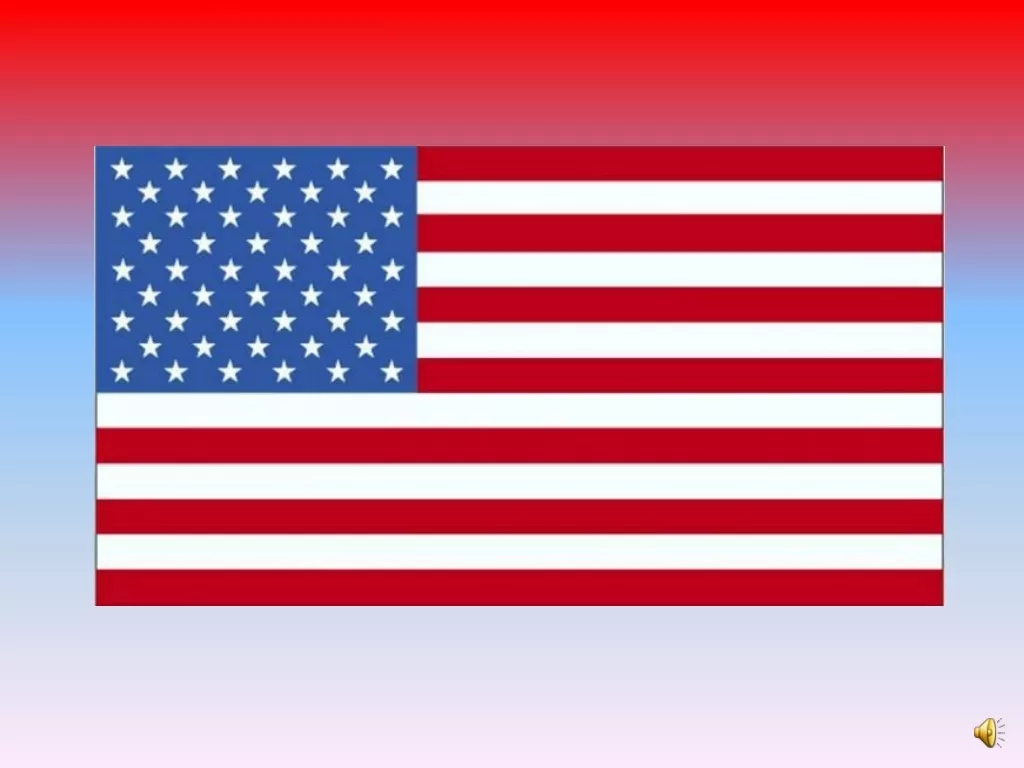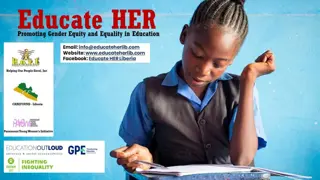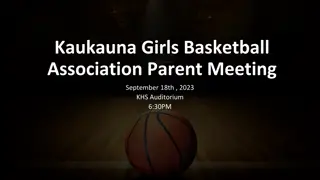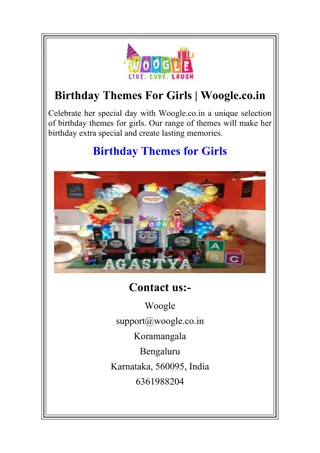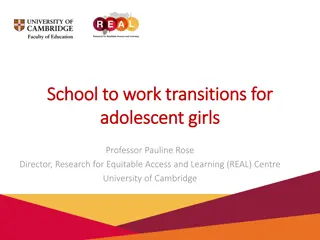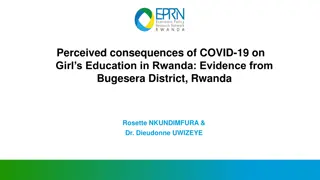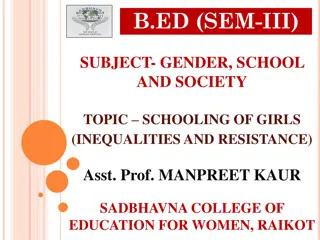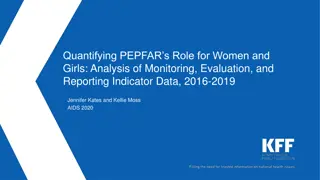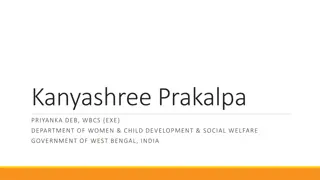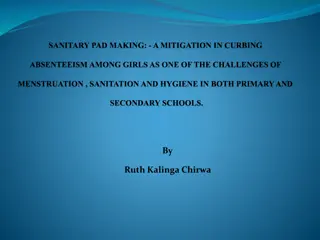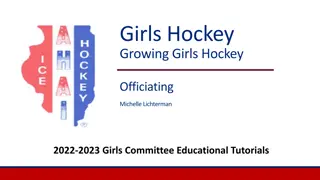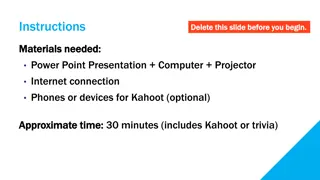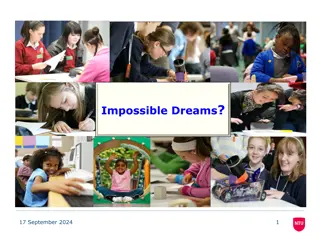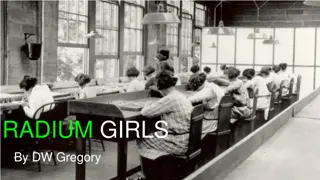
Addressing Harmful Gender Stereotypes in Girls' Clothing
Explore the issue of harmful gender stereotypes in girls' clothing, the current situation in the UK, and how the National Federation of Women's Institutes aims to empower girls with equal, practical, and quality clothing choices through a detailed resolution. Take a closer look at the scale of the problem, the UK's existing conditions, and potential avenues for the WI's involvement to drive positive change in the fashion industry.
Download Presentation

Please find below an Image/Link to download the presentation.
The content on the website is provided AS IS for your information and personal use only. It may not be sold, licensed, or shared on other websites without obtaining consent from the author. If you encounter any issues during the download, it is possible that the publisher has removed the file from their server.
You are allowed to download the files provided on this website for personal or commercial use, subject to the condition that they are used lawfully. All files are the property of their respective owners.
The content on the website is provided AS IS for your information and personal use only. It may not be sold, licensed, or shared on other websites without obtaining consent from the author.
E N D
Presentation Transcript
National Federation of Womens Institutes Resolution Shortlist November 2021 Fit for Purpose Fit for Girls Girls clothing ranges often promote harmful gender stereotypes and can lack the practicality and robustness of boys clothing due to the differing design features and materials used. The NFWI calls on clothing manufacturers and retailers to produce and market clothes for girls at all ages which are equal to their boys clothing ranges in terms of design, quality and coverage, and which aim to empower and enable girls to feel comfortable and confident in whatever activity they choose throughout their childhood.
Outline of presentation What is the scale of the problem? The current situation in the UK How the WI could work on this issue if it was passed Points to consider Further information
What is the scale of the problem? Gender stereotypes are based on outdated ideas about men and women and their roles in society. In clothing, this goes beyond size and fit and also includes colour, slogan, motif, character, the finer details and, in some cases, font too. Research shows that clothing marketed at girls has been described as being made of low quality materials, and in smaller sizes. In 2020, the Commission on Gender Stereotypes in Early Childhood, established by the Fawcett Society, published a landmark report in which evidence showed that harmful gender stereotypes are significantly limiting children s potential.
The current situation in the UK A study published in 2010 explored how clothing marketed differently to girls and boys has different levels of content , with boys clothing often seeking to impart information about subjects such as dinosaurs, or science, while girls clothing did not include similar educational content. The Childrenswear Responsible Retailing guidance by the British Retail Consortium is supported by the UK Government and states that childrenswear must not unduly stereotype. However, the code of practice is purely voluntary. There are a number of grassroots campaign organisations that aim to create more parity in childrenswear and eliminate the inappropriate sexualisation of young girls clothing. In Wales, after the release of a report entitled Charter for Change , the Welsh Government updated school uniform policy to state Schools uniform policies should not dictate different items of clothing on the basis of sex/gender . However, there has been no such guidance for schools in England.
How the WI could work on this resolution At local and regional levels, this resolution could involve WI members writing to retailers and using their consumer purchasing power to effect change. This could include asking clothing companies to commit to ending the use of slogans and marketing approaches that trade on harmful gender stereotypes. Nationally, the NFWI could engage with retailers and the British Retail Consortium to encourage retailers to adopt the code of practice set out in The Childrenswear Responsible Retailing guidance.
Points to consider The WI would be well placed to campaign on gender stereotypes and inequality and to draw links between gender stereotypes and violence against women and girls. WI members are well-connected in their communities, and could use their existing networks to inform more people of the effects of gender stereotyping and influence consumer choice, as well as speak to local schools to encourage them to adopt a gender-neutral school uniform policy. While the focus of this resolution is on calling on clothing manufacturers and retailers to take action, their practices will be influenced by consumer demand. Could a change in consumer behaviour be difficult to achieve or could a WI campaign help to drive this forward?
Further information NFWI Public Affairs Department E: pa@nfwi.org.uk T: 020 7371 9300 https://www.thewi.org.uk/campaigns Let Clothes be Clothes: www.letclothesbeclothes.co.uk/ The Fawcett Society: www.fawcettsociety.org.uk/news/fawcett-research- exposure-gender-stereotypes-child-causes-harm-later-life Video content You can be animation by Zero Tolerance: www.youtube.com/watch?v=fdzjnIJgq88&t=138s Girls can't wear trousers? Gender inequality in school dress codes www.youtube.com/watch?v=6e4qSWyrnhI

